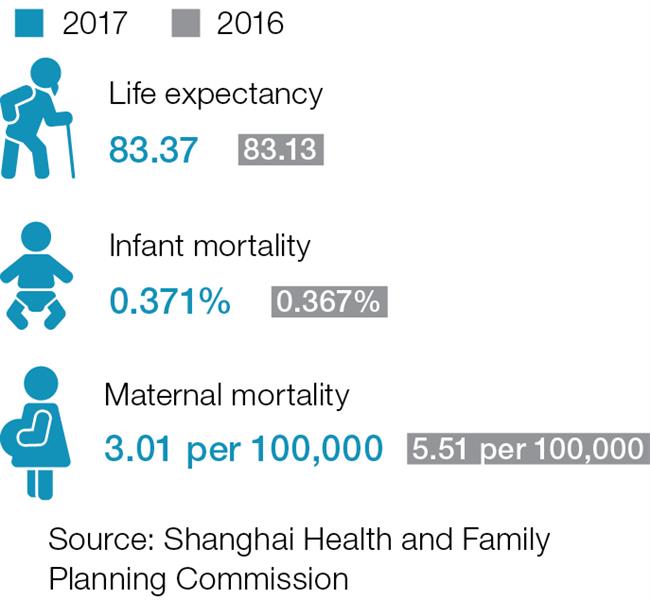Life expectancy rises for city residents

The average life expectancy of Shanghai’s registered population reached 83.37 years last year, 0.24 years higher than in 2016, the city’s health and family planning commission said yesterday.
The average life expectancy for the city’s women residents is 85.85 years, about five years more than the men’s 80.98.
Maternal mortality dropped from 2016’s 5.51 per 100,000 people to a record low of 3.01 while infant mortality was 3.71 per 1,000 babies, a slight increase of 0.04.
The three indexes, major factors used by the World Health Organization to measure a region’s health level, have been in line with developed countries and regions for more than a decade, the commission said.
The longer average life expectancy and lower maternal mortality could be attributed to the city government’s efforts in improving the public health service system.
The city has 156 first-aid stations with 773 ambulances, meeting the criteria of one ambulance for 40,000 residents. Last year they provided first aid to more than 690,000 patients.
The government also promoted and applied a healthcare management system for chronic diseases, combining treatment and prevention, general practitioners and specialist physicians, and different levels of medical treatment, ranging from community healthcare centers to 3A-grade hospitals.
A stroke prevention and rescue system has also been created, connecting 11 city-level stroke clinical treatment centers, 25 district stroke treatment centers, city and district disease prevention and control centers and all the city’s community health-care centers.
In 2016 the government launched a system for diabetes prevention and treatment based on online platform “Health Cloud.”
Free colon cancer checks in the community, launched in 2011, have been administered to over 3.18 million residents, more than half of whom were found to be in early or middle stage of the disease. Another program for people aged above 60 on pneumococcal vaccine injection has completed 1.31 million injections since it started in 2013.
To ensure maternal and child safety, the government has formed a management system with measures including early warnings and evaluating risks in pregnancy.
Since 2006, pregnant women have been offered free checks and risk evaluations. An emergency rescue mechanism was put into effect in 2007 which requires maternity institutions to report to the district-level professional maternity and child health institutions within an hour if they find a pregnant woman in danger. Medical institutions where a pregnant woman died will be interviewed by city or district health authorities to find the cause and make improvement.
The city has set up five group consultation and rescue centers for pregnant women in a serious condition and another six for babies in danger.
“We have moved steadily ahead with the pilot scheme for comprehensive medical reform. (A total of) 3.409 million people have signed up for the “1+1+1” family doctor project. All public hospitals in Shanghai have canceled drug price mark-ups. Local resident’s major health indicators are among the world’s best,” the city’s Mayor Ying Yong said in a report that mentioned the government’s work in the past five years on Tuesday.















